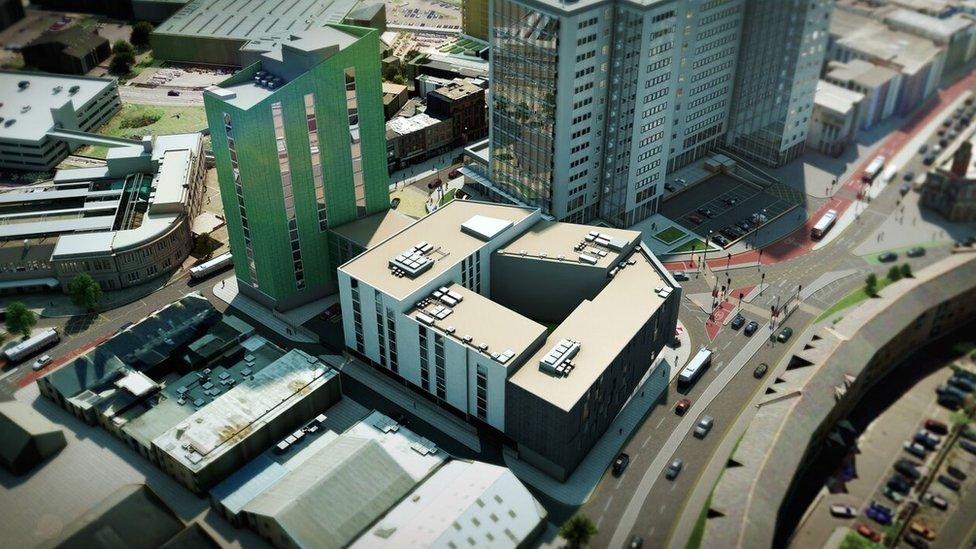'The amazing change' behind Swansea's High Street
- Published
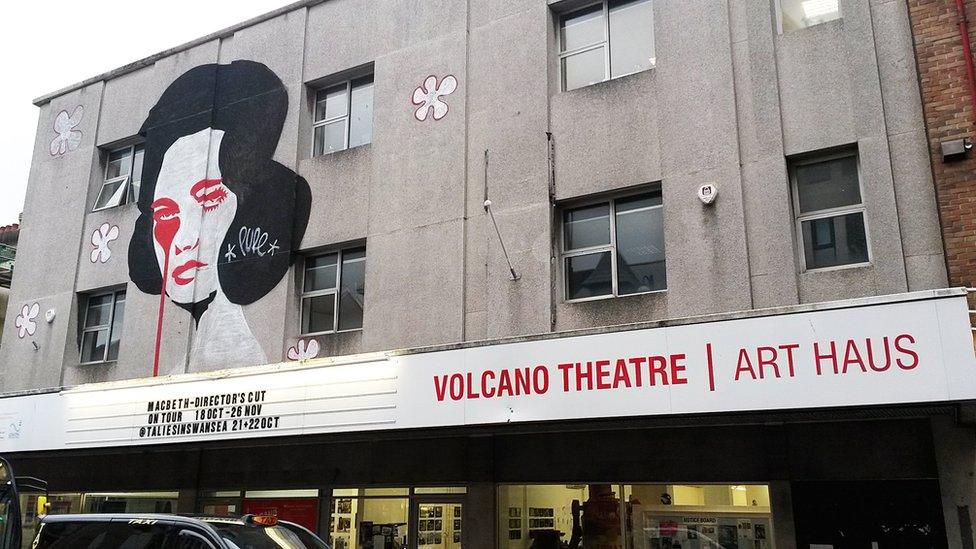
A mural by Welsh artist Charles Uzzell-Edwards, aka Pure Evil, on Swansea High Street's Volcano Theatre
When gallery director Jonathan Powell first started working in Swansea's High Street in 2006 it was "a bit like Beirut", he said.
A landscape of boarded-up shops and off-licences and "nothing else", it reminded the Swansea art school graduate of the Dylan Thomas broadcast, Return Journey, external, in which he describes coming home to a bombed-out city:
"I went out of the hotel into the snow and walked down High Street, past the flat white wastes where all the shops had been..."
Now, as the area enjoys a renaissance, those same shops are more likely to be serving flat white coffees.
"It was a forgotten bit of the city," Mr Powell explains.
"All the money had been invested in the marina and the High Street had been cut adrift.
"When they had Christmas lights in 2008, there was one light on the street. People would hurry through.
"Now, they are taking their time. There are clothes shops, restaurants, bars - It is hard to keep up with the change."

A mural by Cardiff-based artist Photini Matsi adorns an old clothes shop
That change has been driven by housing association Coastal,, external which since the mid-90s has invested about £30m, half of which was public funding, in buying up the High Street's empty clothes shops, call centres and nightclubs.
Some have been leased to artists at low rents. An old Iceland supermarket is now the home of the Volcano Theatre, external, as well as Mr Powell's Elysium Gallery, external and its 36 studios and library.
Other High Street buildings have made way for Coastal's Urban Village development, which houses 133 flats, the South Wales Evening Post, independent businesses, Galerie Simpson, and more than 100 of Coastal Housing's Swansea staff.
Swansea's TechHub, external has also set up shop there and provides space for 20 digital start-ups, employing up to 300 people.
"It was a strategic decision. It was about bringing people back to living in the city," Gareth Davies, Coastal's development director, explains.
Rather than just building houses, they wanted to create an "economic and cultural vibrancy".
One of the most tangible signs of change is the street art.
It is all part of the £400,000 From the Station to the Sea, external arts project run by Coastal and the Volcano - the front of which is now emblazoned with a large mural of Elizabeth Taylor.
"We have a wider interest in making sure that Swansea thrives," Mr Davies said.
"Clearly we have to be sustainable, but it's about having an eye on the future. Could the High Street look like Shoreditch or Brighton's Sydney Street?"

The High Street in 2000 - and the Urban Village now
Elysium also has studios in the old Barons nightclub,, external made famous in 1997's cult comedy film Twin Town.
About 100 artists are now working in and around the High Street, making Elysium the biggest provider of artists' studios in Wales.
"I don't know how that happened," Mr Powell laughs. "Without Coastal, I don't think it would have happened so quickly. It was always our vision to come back to the High Street.
"We are not funded. We pay our own way. And hopefully it will stay like this."
He said there used to be "no reason" for the artists of Swansea to stay and work in the city and believes artists are an important part of how a city should run.
"Just like a butcher or a baker, they need somewhere to sell their wares. This wasn't happening here in Swansea. But now that attitude has changed."
Where artists led the way, private developers are following.
Icon 21, a £50m, 700-flat student tower on the High Street will be finished by summer 2018 and it is hoped this development will help create a new gateway to the city centre.
About 4,000 student apartments have been approved or are in the pipeline for Swansea; the High Street's Grade II-listed Castle cinema could be turned into flats.
Last year, a huge £500m transformation of Swansea city centre was announced, complete with a 3,500-seat arena and "city beach" area with bars, restaurants, offices, and five-star hotels.
But does this privately-led redevelopment complement the High Street project - or work against it?
"Both," Mr Powell said. "People get upset when buildings get knocked down. But it means there is always something new happening. Like the new painting on the Volcano Theatre - it's divided opinion. But we can always paint it over.
"Something new will take its place, eventually."
For some, the High Street is about testing "new models" of collaborative regeneration, led by the housing, art and digital sectors who all have a stake in the area.
"It's about change happening from the ground up," said Carrie Rhys-Davies of From the Station to the Sea.
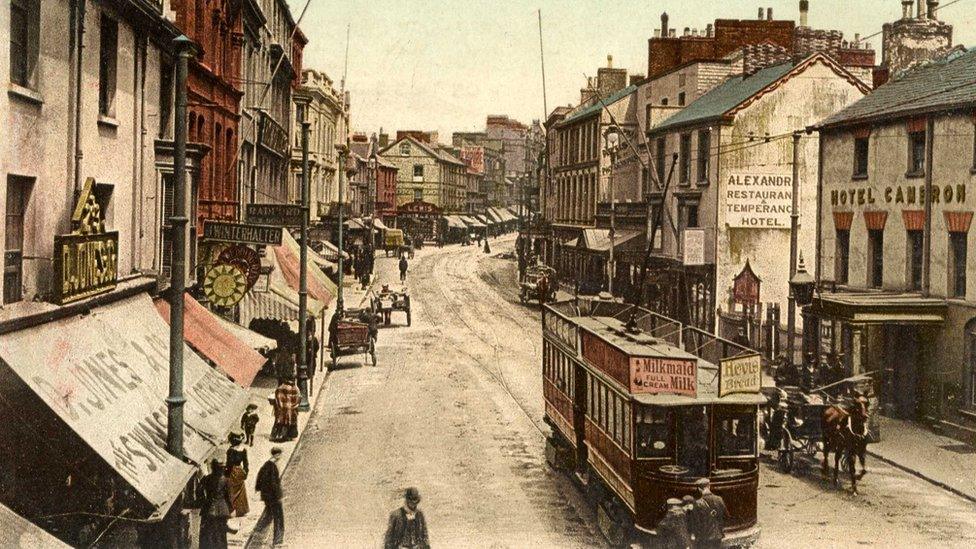
The High Street as it looked more than 100 years ago - a new arts project aims to reinstall awnings
As well as its street art, her project has installed a temporary artwork in the Urban Village and a sound sculpture in one of the High Street's disused alleyways.
Working with trader Buon Appetito, it is also reintroducing traditional style awnings.
Arts-led processes like this, Ms Rhys-Davies said, could be a "brilliant way" of helping communities realise what changes they want to see.
"Regeneration is not always necessarily the best term," she added.
Others say more mainstream developments will complement what the High Street has to offer.
Robert Francis-Davies, Swansea council's cabinet member for regeneration, was born on the High Street.
He said the revamp of the area gave "individuality" to the city, and more footfall from flats meant more customers for artists.
"In a city of this size, you normally have around 30 - 40% of the city centre occupied. In Swansea that's just 19%.
"What we need is people living and working in the city centre."
Yet some have sounded caution about the type of housing being built - and say a truly healthy city centre needs more family accommodation.
Mr Davies agrees more can be done. He said Coastal hoped to focus on the delivery of family accommodation.
"Cities have quarters. It's about having everything for everybody."
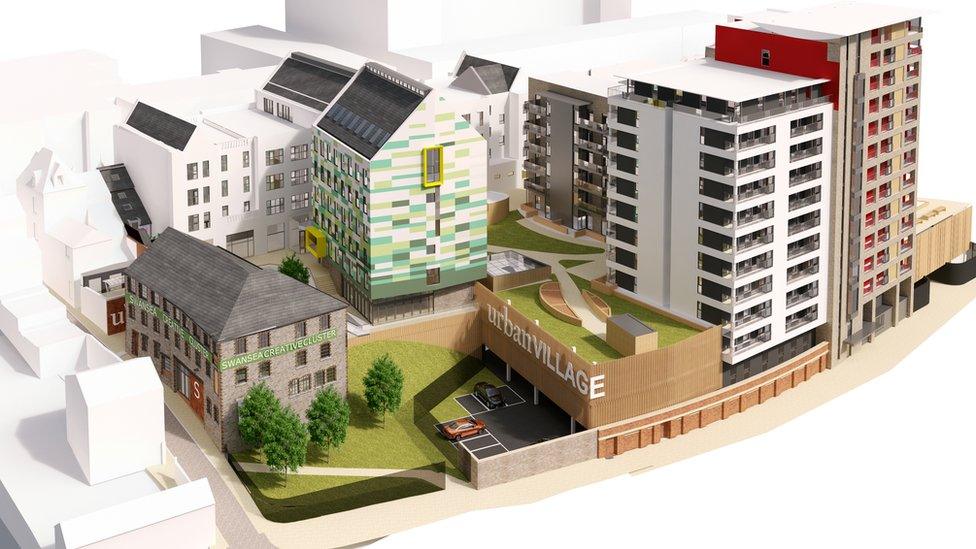
The Urban Village is home to Swansea TechHub, which is the base for 20 tech start-ups who do business around the globe
Meanwhile, the growth of the city continues to attract back those who had left.
TechHub has capitalised on this. Founder Paul Harwood, a graduate of Newport's University of Wales, said the new space was "pretty awesome".
"Swansea is probably one of the best places in the world to start a business," he enthused.
"Low cost is the main factor. We've got great access to talent with the universities, and the community is really friendly."
He said the arts and technology were "closely aligned".
"We are often faced with the same challenges - and with very little money.
"A good arts sector attracts well-educated people and that is what tech start-ups need to help them grow."
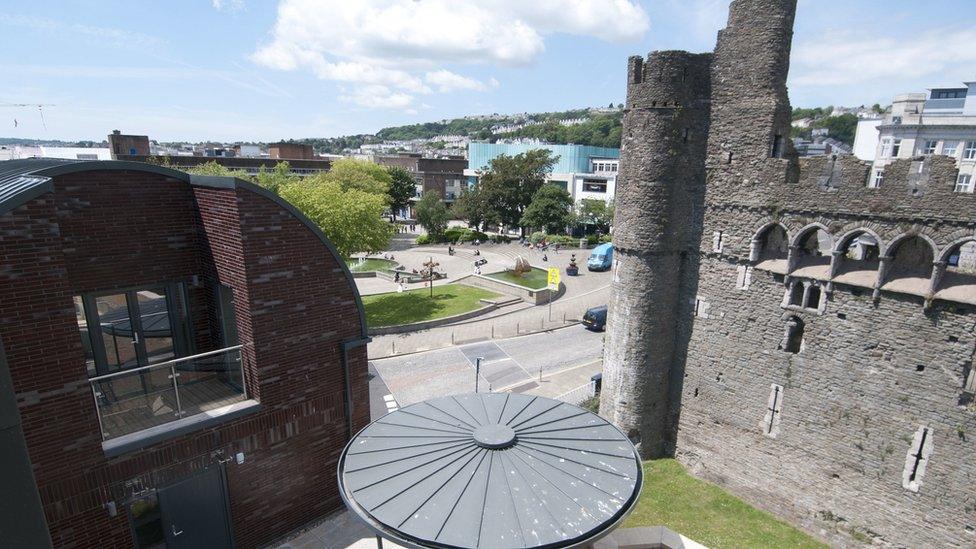
The new Castle quarter overlooks the top of the High Street
Mr Francis-Davies said Swansea University aimed to build on the TechHub's success with city centre digital hubs and the council was working with BT on an ambitious project to develop the fastest broadband in Europe.
"We want to make sure that Swansea can compete with the rest of the world," he said. "Swansea grew through invention; the world price of copper was set in the city.
"It is time for Swansea to reinvent itself through innovation."
The change is fragile. Low wages and austerity mean the city will not fulfil its potential overnight.
Yet Mr Powell is cautiously optimistic that "ugly, lovely" city recalled by Dylan Thomas is finally blossoming.
"The reopening of the Glynn Vivian art gallery has been the icing on the cake.
"It's slow. I change my mind from one day to the next. But then if you remember what it was like five years ago, the change is amazing.
"That is the key difference really - things are now growing."
- Published14 October 2016
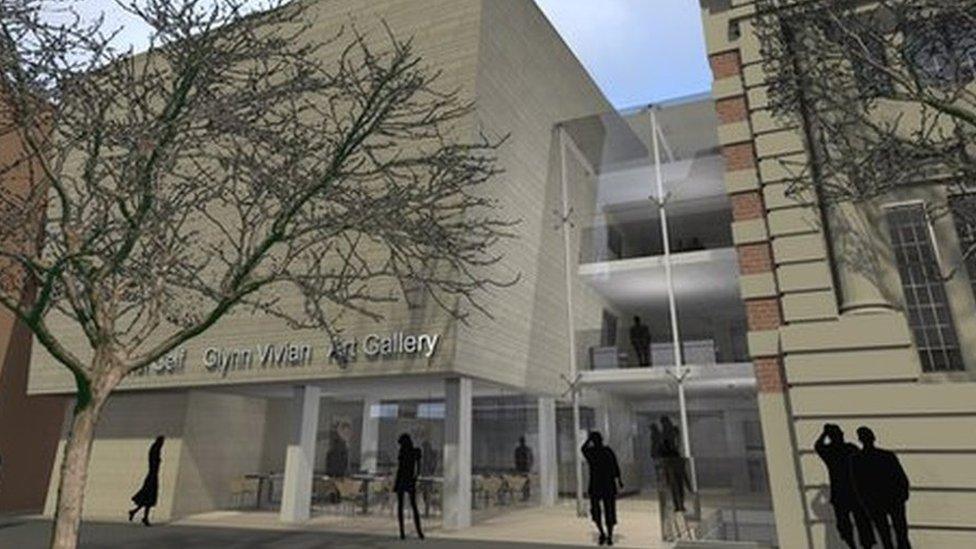
- Published19 February 2016

- Published20 January 2014

- Published19 May 2015
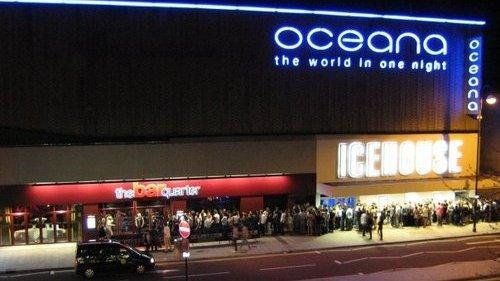
- Published22 September 2014
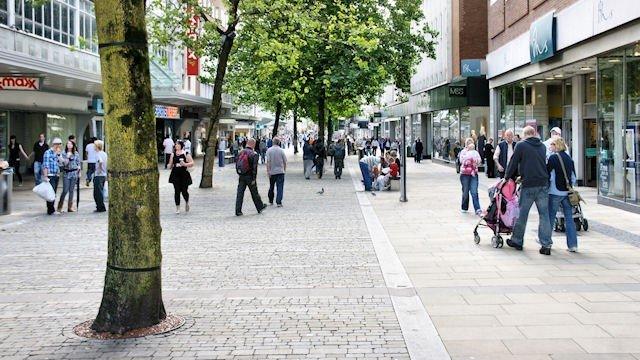
- Published15 February 2014
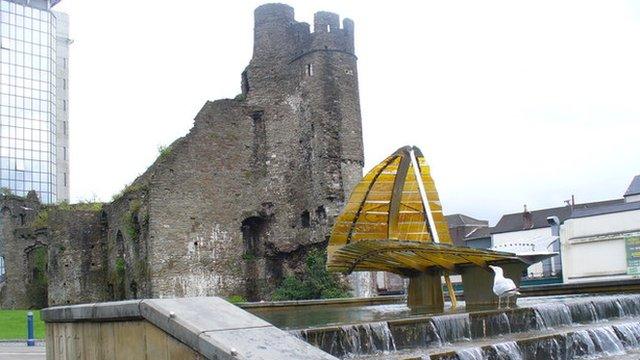
- Published26 February 2016
